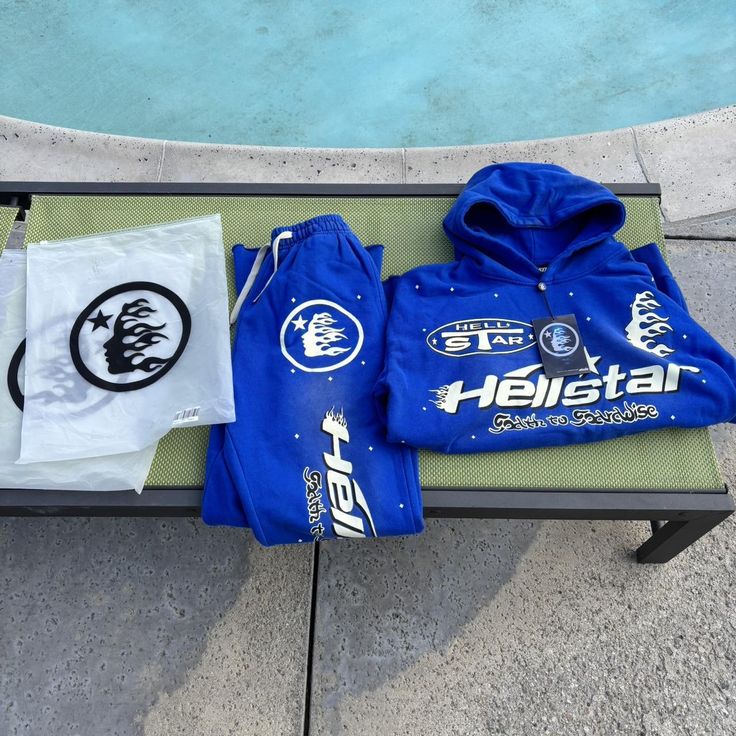
In the vast galaxy of streetwear, where every brand tries to speak the loudest, Hellstar Tracksuit whispers in a tongue older than time — the language of celestial chaos. It’s not just about clothes; it’s about energy. The brand draws its aesthetic from the cosmic collision between order and entropy, where myth meets metal, and rebellion is stitched into every seam. To dress in Hellstar is to wear a constellation of contradictions — beauty and destruction, light and shadow, mortality and myth.
Hellstar doesn’t follow trends. It transcends them, channeling themes that feel more like rituals than runways. Each drop feels like a cosmic event — sudden, intense, and destined to leave a mark. The color palettes move like nebulae: unpredictable swirls of space-black, supernova red, and starlight silver. These aren’t just hues; they’re metaphors — representing collapse, ignition, rebirth. A Hellstar hoodie isn’t merely thick cotton; it’s a cloak of the void, something that feels like it was torn from the fabric of space itself.
The language of Hellstar is visual, symbolic, even metaphysical. The brand speaks in iconography — fragmented skulls, melting stars, wings on fire, angelic script warped by demonic distortion. These symbols are not just edgy graphics but elements of a larger cosmology. They hint at ancient wars between galaxies, at fallen seraphim and ascendant outlaws. Each graphic pulses with narrative tension, like a prophecy wrapped in fabric.
Hellstar’s identity is deeply rooted in contradiction. It reflects the human desire to touch the divine while being tethered to the dirt of existence. You see this tension in their designs — religious motifs collide with chaos magic; clean silhouettes disrupted by scorched textures; serenity interrupted by screams of color and form. It’s a celebration of duality — light that can’t exist without dark, creation that demands destruction.
To dress in Hellstar is to become fluent in this visual dialect. The brand doesn’t just offer apparel; it offers armor for the spiritually discontent, for those seeking meaning in a universe that refuses to offer answers. A Hellstar fit isn’t just a style statement — it’s a personal mythology. People don these pieces like modern-day shamans, not looking for approval but transmitting their own signals into the cultural ether. Every Hellstar garment becomes a sigil of identity, a challenge to the flatness of the mainstream.
Even the way Hellstar drops its pieces speaks the language of cosmic unpredictability. Limited releases, sudden announcements, cryptic previews — it’s a model built on scarcity, yes, but also on mystery. This mimics the cosmos itself: infinite, yet unreachable. A Hellstar drop is like spotting a comet — rare, fleeting, unforgettable. You don’t just shop Hellstar; you chase it like a cosmic event. You orbit it, caught in its gravity.
The construction of Hellstar garments reflects this ideology. Quality matters. The hoodies are thick enough to shield you from the chill of planetary winds — or at least from the urban cold. The stitching feels intentional, ritualistic. These aren’t throwaway threads; they’re built to last, like relics from a fallen future. When you wear Hellstar, you’re stepping into a space where craftsmanship and concept are equally important. It’s fashion as artifact, streetwear as scripture.
But perhaps the most compelling element of the Hellstar language is how it invites interpretation. The brand doesn’t tell you what to think. It gives you symbols and lets you decode them. It’s not about being part of a crowd; it’s about finding your own signal in the static. One person might see divine rebellion in a graphic tee; another might see the story of Lucifer falling through a wormhole. That’s the point. Hellstar gives you the bones of a mythology and asks you to flesh it out with your own beliefs, experiences, and dreams.
In an era where much of fashion feels hollow, algorithmic, and reactive, Hellstar feels alive. It doesn’t just clothe the body — it haunts it. It challenges you to think about who you are and what universe you’re building with every outfit. It’s not aesthetic for aesthetic’s sake. It’s a worldview. A cosmology.
So when you put on Hellstar, you’re not just getting dressed. You’re aligning with chaos, channeling the divine disorder that fuels creation itself. You’re speaking a language born from supernovas and forged in myth. You’re stepping out not just as a person, but as a symbol, a spark, a satellite of the strange, beautiful void that Hellstar so eloquently maps.
In that way, Hellstar is not just a brand. It’s a prophecy. A portal. A poetic defiance of everything fashion was supposed to be. And in its chaos, we find clarity. We find power. We find ourselves.